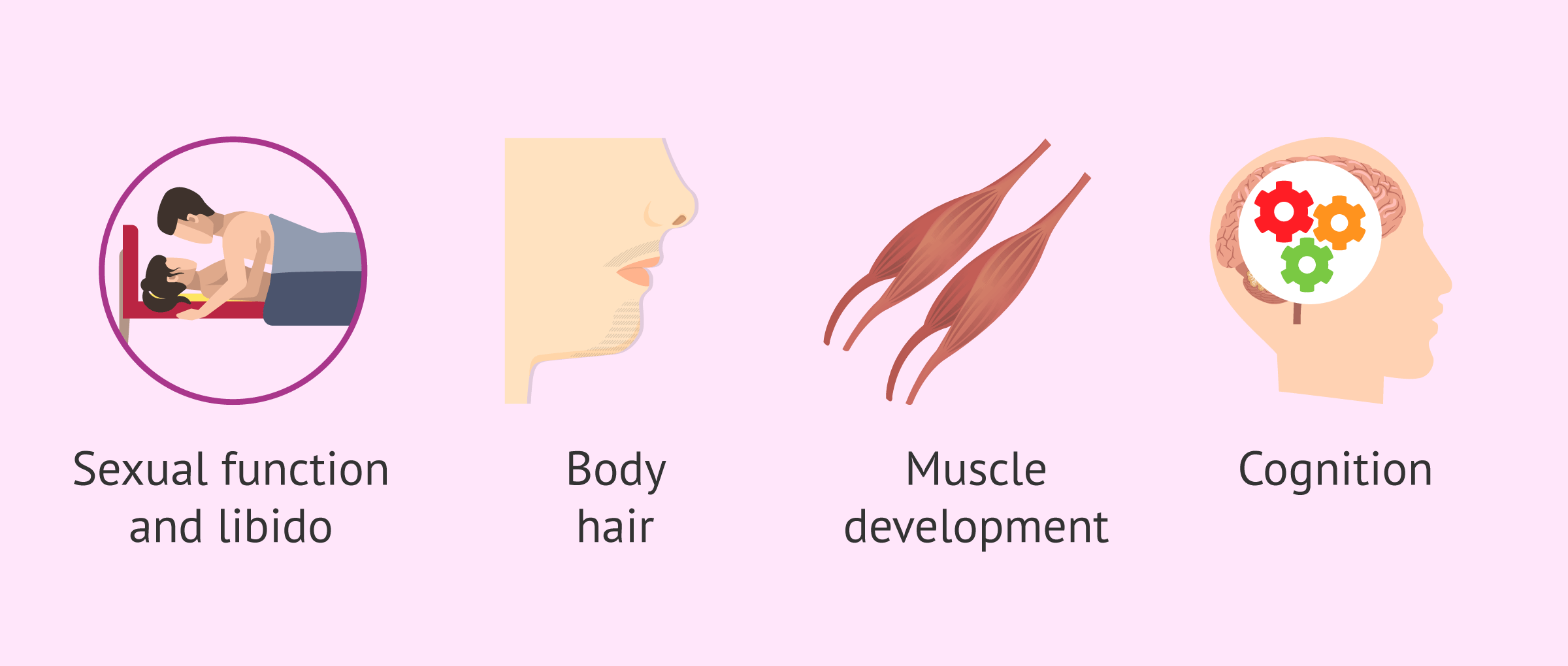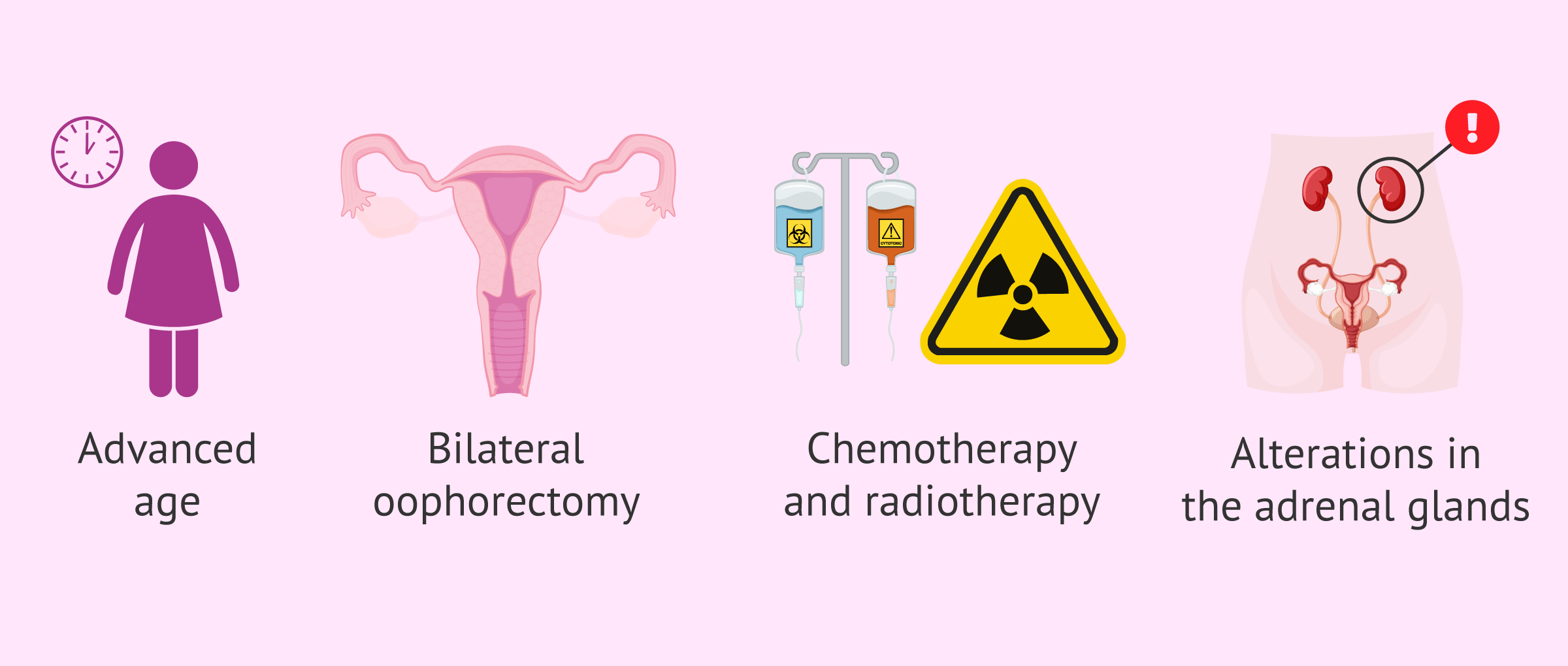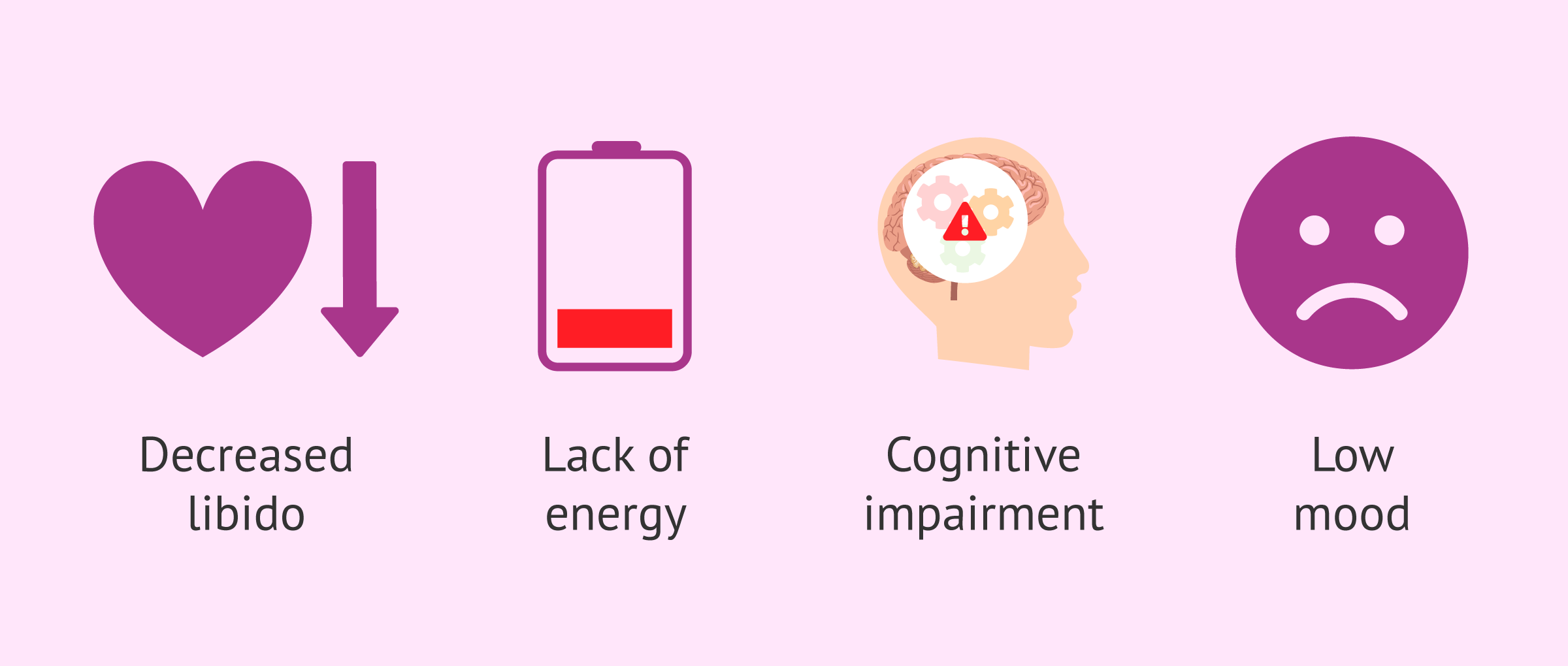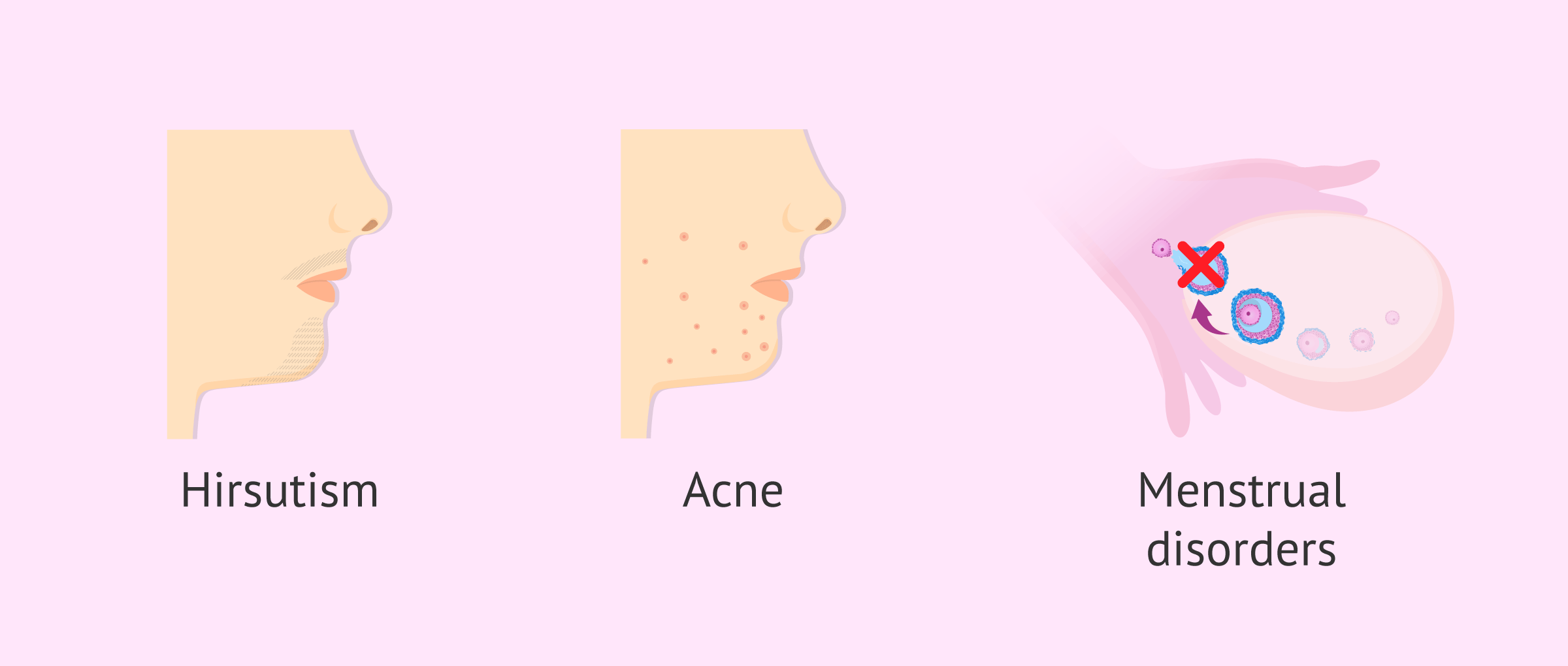Testosterone is the quintessential male sex hormone and, in fact, is commonly referred to as the "male sex hormone male hormone". It is a steroid hormone, which belongs to the androgen group.
Thus, one of the main functions of testosterone is to promote the development of sexual characteristics in males. However, this hormone also plays an important role in women's health.
Provided below is an index with the 9 points we are going to expand on in this article.
- 1.
- 2.
- 3.
- 4.
- 4.1.
- 4.2.
- 4.3.
- 5.
- 6.
- 6.1.
- 6.2.
- 6.3.
- 6.4.
- 7.
- 8.
- 9.
Testosterone functions
Testosterone has similar functions in both men and women. Therefore, this hormone intervenes in both sexes in aspects such as:
- Sexual function and libido.
- Appearance of body hair.
- Muscle development and contribution to bone health.
- Cognition, i.e., the faculty of learning, remembering, planning, etc.
- Mood and humor.
In addition, it is important to note that androgens are precursors to synthesize estradiol (an estrogen). The theca cells of the ovarian follicle produce androgens, which will be converted to estradiol in the follicular granulosa cells.
Testosterone production in women
While it is true that testosterone levels are lower in women than in men, this hormone is necessary for both. A woman produces approximately 300 micrograms of testosterone each day.
In women, testosterone is produced by the ovaries and adrenal glands. Specifically, each of these glands produces 25% of testosterone levels. On the other hand, the remaining 50% of this hormone is obtained by the conversion of androstenedione to testosterone.
Therefore, in addition to testosterone, there are other important androgens in women:
- Dihydrotestosterone (DHT), with high androgenic activity.
- Androstenedione, from the ovaries and adrenal gland.
- Dehydroepiandrosterone (DHEA) and its sulfate (DHEAS).
However, androstenedione, DHEA, and DHEAS are precursors and can eventually be converted to testosterone and DHT to exert their androgenic function.
Normal levels
In the blood, much of the total testosterone is transported bound to a protein called Sex Steroid-Binding Globulin(SHBG). In addition, there is a fraction of testosterone bound to albumin and only 1% circulates as a free hormone. This means that only this small percentage of free testosterone and that bound to albumin would be active to perform its functions.
However, it is not only the level of androgens in the blood that is important. Testosterone will be able to exert its actions according to the circulating values of active hormone, but it is also influenced by the enzyme 5 alpha-reductase (which transforms it into DHT) and the testosterone receptors in the tissues where it must perform its functions.
Thus, determining normal blood testosterone values loses some relevance, since its effects also depend on other factors.
On the other hand, it should be noted that testosterone levels vary throughout a woman's menstrual cycle: they increase at the time of ovulation and remain high until the end of the cycle.
Low testosterone in women
As we have mentioned, testosterone is an important and necessary hormone in women, so having a testosterone deficit is not a desirable situation.
Causes
Women will have a higher amount of androgens in their bodies around the age of 20. Testosterone then declines as a woman's age increases. Thus, aging can lead to low levels of this hormone.
In addition, testosterone deficiency may also occur in other situations such as:
- Bilateral oophorectomy, i.e. removal of the ovaries.
- Chemotherapy and radiotherapy.
- Alterations in the adrenal glands or their removal.
- Early ovarian failure (EOF).
- HIV infection.
On the other hand, stress could also affect the production of androgens by the adrenal glands.
Symptoms
The main symptoms that a low testosterone level in women can produce are the following:
- Sexual dysfunction and decreased libido.
- Feeling of lack of energy, fatigue, loss of strength.
- Alteration of cognitive function.
In addition, testosterone deficiency has been linked to low mood, sadness and, in general, lack of well-being.
Treatment
Although their importance is known, there is still some controversy about the role of testosterone and androgens in women, as well as the values that would be normal for each age.
For this reason, treating testosterone deficiency with replacement therapy needs further research, to see which women might benefit from it. However, in the case of this type of treatment, it should always be supervised by a professional.
Replacement therapy is the exogenous administration of the hormone, for example with patches, to make up for the deficiency when the body does not produce enough of the hormone.
In addition, it is important to mention that the possible long-term effects of this testosterone therapy in women are not clearly known. On the other hand, the potential risks associated with this therapy may also depend on the dose and route of administration of testosterone.
High testosterone in women
One of the main situations in which women have elevated androgen levels is polycystic ovarian syndrome (PCOS). This syndrome is characterized by the fact that the woman presents several of these characteristics:
- Oligoovulation or anovulation.
- Polycystic ovaries by ultrasound.
- Clinical or biochemical hyperandrogenism.
In addition, SHBG may be decreased in these patients, which would increase the circulating free testosterone fraction.
Thus, the main symptoms that can be produced by an excess of androgens or hyperandrogenism in women with PCOS are:
- Hirsutism, i.e. the presence of hair in typically male areas.
- Acne.
- Alterations in the menstrual cycle, which can lead to problems in achieving pregnancy.
You can read more information about this syndrome in the following article: Polycystic ovary syndrome (PCOS): causes, symptoms, and treatment
Assisted procreation, as any other medical treatment, requires that you rely on the professionalism of the doctors and staff of the clinic you choose. Obviously, each clinic is different. Get now your Fertility Report, which will select several clinics for you out of the pool of clinics that meet our strict quality criteria. Moreover, it will offer you a comparison between the fees and conditions each clinic offers in order for you to make a well informed choice.
FAQs from users
Does testosterone drop in women at menopause?
No, testosterone levels decrease as women age, but there does not appear to be a greater effect as women enter menopause.
How much testosterone do women produce?
50% of the testosterone in a woman's body comes from the conversion of other androgens, while the other 50% is produced directly in the ovary and the adrenal glands in equal parts.
Specifically, women produce between 0.1 and 0.4 mg of testosterone daily, while men produce between 5 and 7 mg daily.
99% of a woman's testosterone is bound to a protein called sex hormone-bound globulin (SHBG), which does not allow it to function. Therefore, only 1% of testosterone will be in free form and may have an effect on the body.
As menopause approaches, there is a decrease in androgen levels. However, the ovaries of menopausal women will continue to produce testosterone constantly.
Where can testosterone concentrations go down or up in women?
In addition to menopause, other situations that may decrease androgen concentrations include anorexia nervosa, medications such as contraceptives (due to increased SHBG concentrations), HIV, bilateral oophorectomy (surgical excision of both ovaries), and endocrine pathologies such as a failure of the adrenal glands or hypopituitarism.
On the contrary, there are circumstances in which higher levels of androgens are observed, such as polycystic ovary syndrome (PCOS)
What purpose does testosterone have during an IVF treatment?
Testosterone is sometimes used in assisted reproduction in an attempt to improve the response in women with low egg reserves.
Testosterone or DHEA pre-treatment appears to be associated with better live birth rates, although the quality of evidence is moderate.
Recommended readings
If you are interested in knowing the normal hormonal values in women, you can read this article: Hormone analysis in women: what are the normal levels?
On the other hand, if you wish to read more information about PCOS treatment, we recommend you to access the following link: Polycystic ovary syndrome (PCOS) treatment
We make a great effort to provide you with the highest quality information.
🙏 Please share this article if you liked it. 💜💜 You help us continue!
References
Chen MJ, Ho HN. Hepatic manifestations of women with polycystic ovary syndrome. Best Pract Res Clin Obstet Gynaecol. 2016 Nov;37:119-128. (See)
Davis SR, Baber R, Panay N, Bitzer J, Perez SC, Islam RM, Kaunitz AM, Kingsberg SA, Lambrinoudaki I, Liu J, Parish SJ, Pinkerton J, Rymer J, Simon JA, Vignozzi L, Wierman ME. Global Consensus Position Statement on the Use of Testosterone Therapy for Women. J Clin Endocrinol Metab. 2019 Oct 1;104(10):4660-4666. (See)
Davis SR, Wahlin-Jacobsen S. Testosterone in women--the clinical significance. Lancet Diabetes Endocrinol. 2015 Dec;3(12):980-92. (See)
Davison SL, Bell R, Donath S, Montalto JG, Davis SR. Androgen levels in adult females: changes with age, menopause, and oophorectomy. J Clin Endocrinol Metab. 2005 Jul;90(7):3847-53. (See)
Guay A, Davis SR. Testosterone insufficiency in women: fact or fiction? World J Urol. 2002 Jun;20(2):106-10. (See)
Islam RM, Bell RJ, Green S, Page MJ, Davis SR. Safety and efficacy of testosterone for women: a systematic review and meta-analysis of randomised controlled trial data. Lancet Diabetes Endocrinol. 2019 Oct;7(10):754-766. (See)
Keevil BG, Adaway J. Assessment of free testosterone concentration. J Steroid Biochem Mol Biol. 2019 Jun;190:207-211. (See)
Martínez-García A, Davis SR. Testosterone use in postmenopausal women. Climacteric. 2021 Feb;24(1):46-50. (See)
Mazer NA. Testosterone deficiency in women: etiologies, diagnosis, and emerging treatments. Int J Fertil Womens Med. 2002 Mar-Apr;47(2):77-86. (See)
Pinkerton JV, Blackman I, Conner EA, Kaunitz AM. Risks of Testosterone for Postmenopausal Women. Endocrinol Metab Clin North Am. 2021 Mar;50(1):139-150. (See)
Rachoń D. Differential diagnosis of hyperandrogenism in women with polycystic ovary syndrome. Exp Clin Endocrinol Diabetes. 2012 Apr;120(4):205-9. (See)
Shifren JL. Testosterone for midlife women: the hormone of desire? Menopause. 2015 Oct;22(10):1147-9. (See)
Smith T, Batur P. Prescribing testosterone and DHEA: The role of androgens in women. Cleve Clin J Med. 2021 Jan 1;88(1):35-43. (See)
Soman M, Huang LC, Cai WH, Xu JB, Chen JY, He RK, Ruan HC, Xu XR, Qian ZD, Zhu XM. Serum androgen profiles in women with premature ovarian insufficiency: a systematic review and meta-analysis. Menopause. 2019 Jan;26(1):78-93. (See)
Vegunta S, Kling JM, Kapoor E. Androgen Therapy in Women. J Womens Health (Larchmt). 2020 Jan;29(1):57-64. (See)
FAQs from users: 'Does testosterone drop in women at menopause?', 'How much testosterone do women produce?', 'Where can testosterone concentrations go down or up in women?' and 'What purpose does testosterone have during an IVF treatment?'.
Authors and contributors
More information about Cristina Algarra Goosman








Hi, I was diagnosed a few years ago with PCOS, I am going to try to get pregnant, should I take a testosterone test?
Hi Katelyn,
Generally, people diagnosed with PCOS can have fertility problems, if this is your case I recommend that you go to a specialist so that you can have a complete hormone analysis.
If you are not sure about it, you can identify anovulation problems as they are the indicators that would show difficulty in conceiving.
I hope everything goes well,
Best regards.